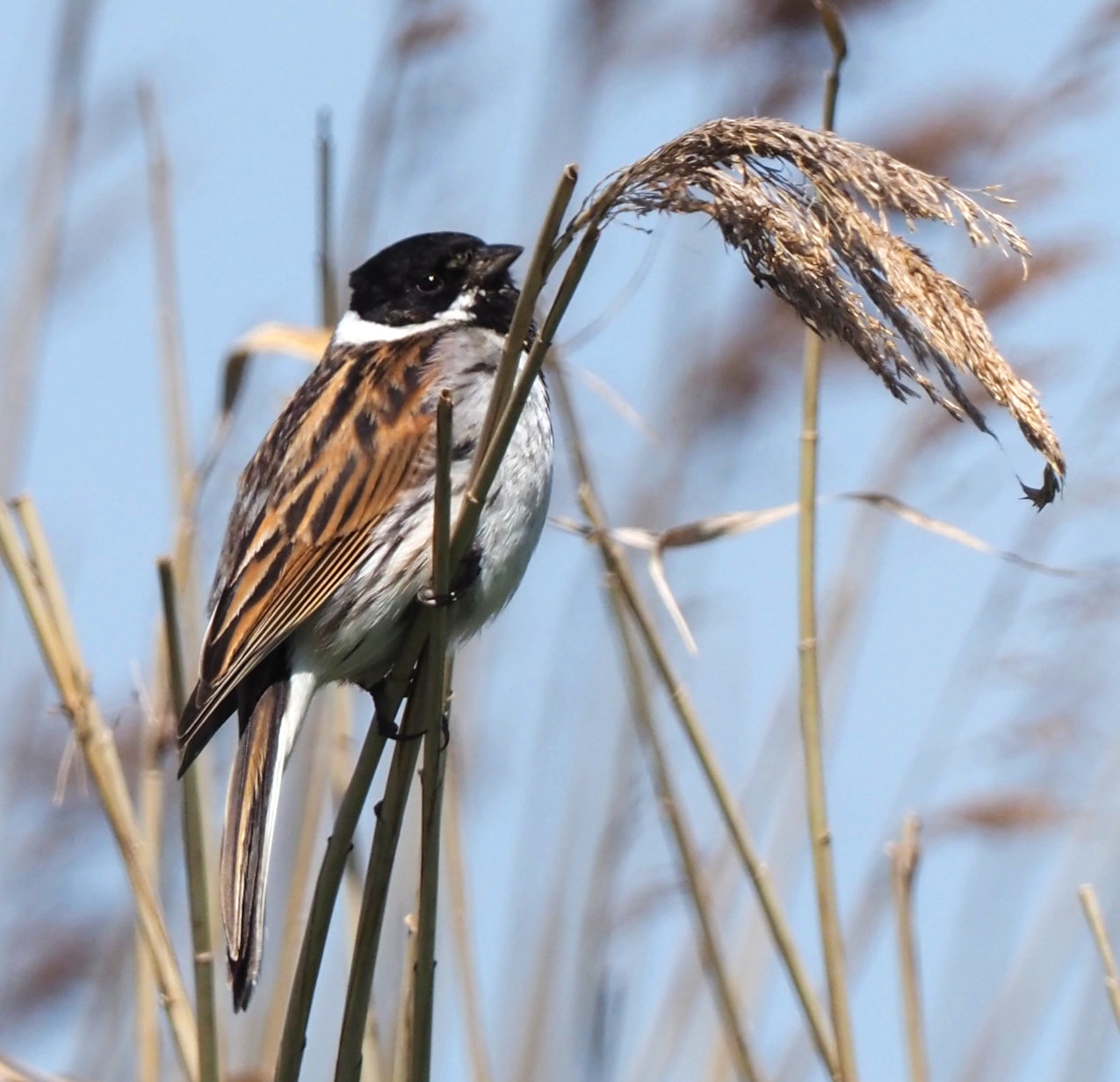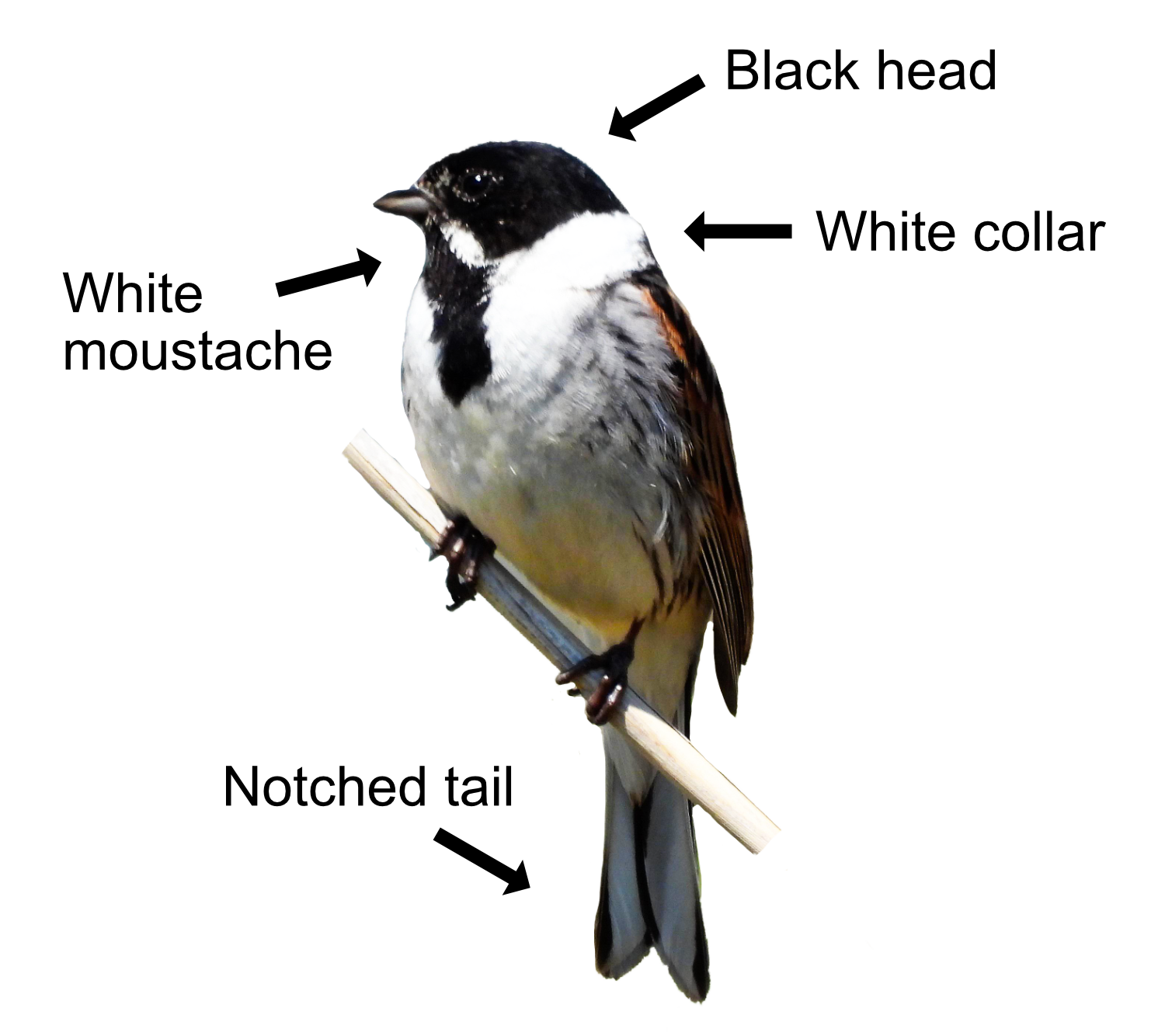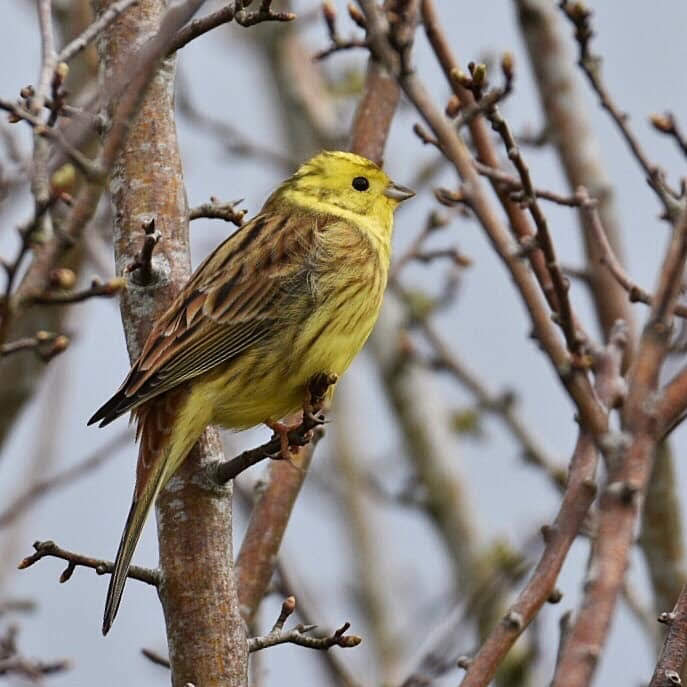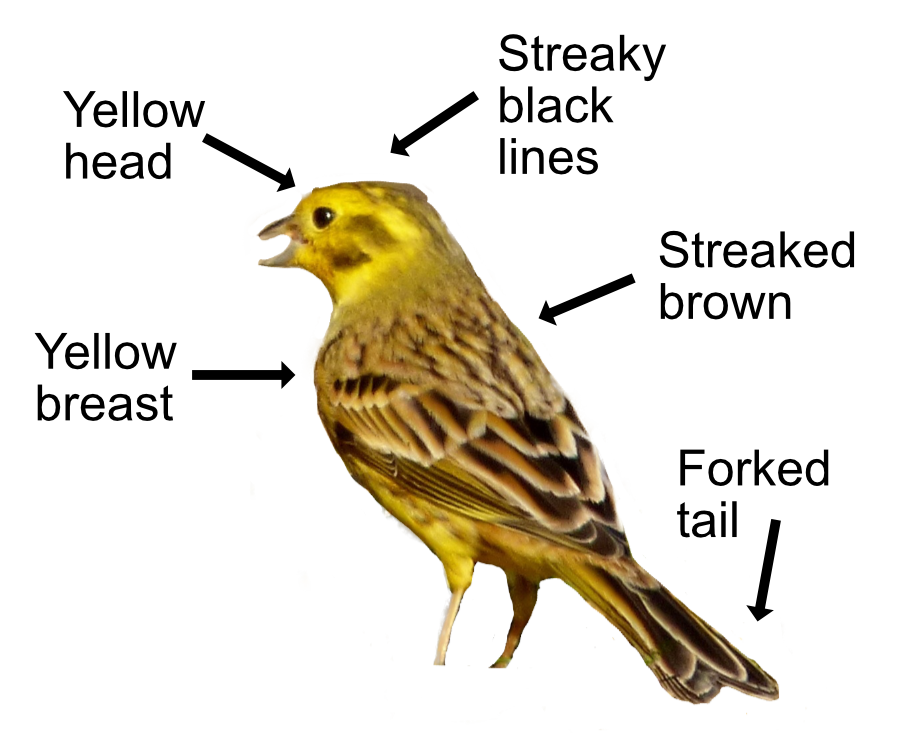
The shy Cirl Bunting likes to be warm and is localised to Devon and Cornwall. The village of Stokeinteignhead in Devon is so proud of them it has one as its mascot. Cirl Buntings are usually found amongst the vineyards of the Mediterranean and spend a lot of their time shuffling about on the ground or perched in bushes. They have only recently arrived here, colonising southern Britain from the 1800s.
The Cirl Bunting is smaller than a Yellowhammer but just as yellow with a flat-looking head, a striking black chin and eye stripe, a black crown, yellow underparts, streaked sides and an olive-coloured rump. There is a greenish band on the chest. The female and youngsters are paler, with a grey rump. Their song is a high-pitched, rattling trill of a single "ink", similar to the start of a Yellowhammer's song, and delivered from a song post.

Cirl Buntings feed mainly on seeds like chickweed and nettle and some insects like grasshoppers and crickets.
They form monogamous pairs in April and the female builds a bulky cup-shaped nest hidden in dense vegetation like bramble. It is made from grass and lined with softer material. Mum incubates the 3-4 eggs which hatch after 12 days. Both parents feed the young, who can fly after 11 days and become fully independent 12 days later. The youngsters can breed themselves by the following year. Mum and dad usually have two broods and sometimes even three.
Its small range and population size means the Cirl Bunting has been on the Red List since 1996. After 25 years of conservation effort, numbers have reached 1,000 pairs from just 118 in the 1980s. Most of their decline was due to loss of habitat when farming practices changed. Farmers are now encouraged to leave stubble overwinter and delay ploughing until the end of March. This allows the Cirl Buntings to feed over the winter on the spilt grain and on the seeds of broad-leaved arable weeds like fat hen and chickweed.
The Cirl Bunting's Latin name is 'emberiza cirlus' where 'emberzia' is from the Old German 'embritz' for a bunting and 'cirlus' is from a local Italian name 'cirlo', also for a bunting, from 'zirlare' meaning 'to chirp'. The English Cirl is also derived from 'cirlus'.





